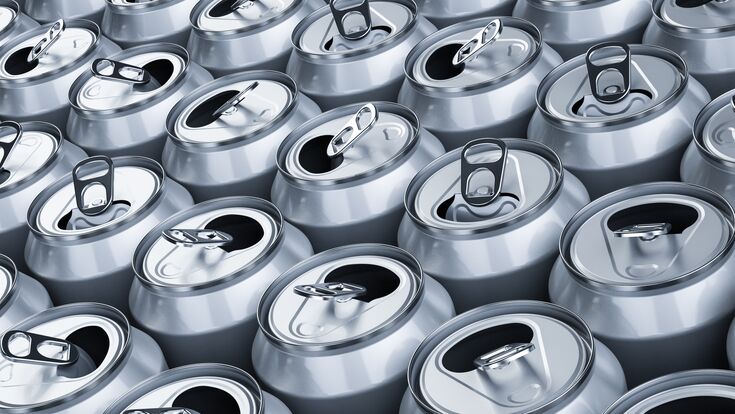Can Recycling : How the can industry plans to meet ambitious recycling rate targets

The Can Manufacturers Insitute (CMI) published the targets back in November last year. Even though the aluminum beverage can is already the most recycled beverage container in the US with a 45 percent recycling rate in 2020, the CMI members aim for much higher recycling rates within the next ten years.
The goals: a 70 percent recycling rate by 2030, 80 percent by 2040 and 90 percent by 2050.
This new report provides more details on what the can industry is doing in the near-term within its four pillars of action to make progress toward the targets and the potential total used beverage cans (UBC) that could be recycled through certain pillars:
- Catalyze the passage and implementation of well-designed deposit systems at the state and federal levels.
- Increase and improve household and away-from-home recycling.
- Ensure that more cans are properly sorted at recycling centers.
- Increase consumer understanding on the importance of aluminum can recycling and the ability to collect and sell used beverage cans for cash.
New data on the potential impact of certain pillars:
For example, if there was a national deposit system that had recycling rates similar to a state such as Michigan where there is a 10-cent deposit, an additional 50 billion aluminum beverage cans would be redeemed through the deposit system and ultimately recycled. This pillar has the greatest potential impact and would allow the industry to quickly reach its goals. This is part of why CMI is aggressively pushing for new, well-designed deposit systems.
CMI modeling also finds that 23 billion additional aluminum beverage cans could be captured from U.S. households if they all went from their current level of recycling access to having automatic, cart-based curbside recycling service with robust education.
If there was perfect sortation at recycling centers, an estimated 3.5 billion additional aluminum beverage cans could be collected for recycling. CMI issued a report in 2020 finding that up to one in four UBCs are missorted at material recovery facilities (MRF), which is where single stream recyclables are sorted.
The additional cans recycled from this effort will flow through an existing domestic circular economy. There are nearly 90,000 aluminum beverage cans recycled every minute in the United States, with 93 percent of those recycled cans going from the recycling bin back to store shelf as a new can in as little as 60 days. This high level of can-to-can recycling has resulted in the aluminum beverage can having an industry-leading average recycled content of 73 percent. Increasing the recycled content of the average can reduces its carbon footprint since making an aluminum beverage can from recycled material results in 80 percent less greenhouse gas emissions than making the container from primary material.
Also the European Aluminium industry is on track with its sustainability goals. Read more here!
